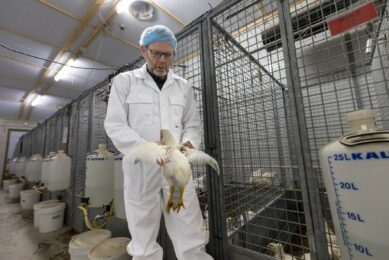Inflation rate to help poultry sector in Zambia
The Poultry Association of Zambia (PAZ) has said this year’s inflationary trend is more likely to contribute to the industry’s economic recovery and growth prospects.
For the last three months, the country’s inflation rate has hit single digit, a situation which has pleased most stakeholders in the local economy. Inflation for the month of June stood at 7.8 per cent but shot up by one per cent for the month of July mainly due to an increase in both non-food and food products in the Consumer Price Index (CPI).
PAZ executive manager Mathew Ngosa said the growth prospects for the Zambian broiler market this year were very good because of some positive factors in the economy like the single digit inflation which the country had recorded in the past months.
“Similar to last year, consumers will remain highly sensitive to price and value. However, the ongoing reduction in inflation may support consumption of broiler meat,” he said. “At the moment broiler meat accounts for over 90 per cent of the Zambian poultry meat market.”
Ngosa said Zambian consumers prefer whole chicken meat and did not import whole broiler meat as the local industry has the capacity to produce and meet the domestic demand. “To some extent the country does import ‘prepared (or cooked) products of broiler meat’, mainly supplied by South Africa,” he said. “Domestic broiler meat holds a majority share of sales in the retail sector.”
And Ngosa said Zambia’s food service sector utilises large quantities of locally produced raw bulk cuts, mainly from the four major poultry processors, Verino, Crest, Eureka and Zamchick. “There are other small processors in the market servicing areas distant from Lusaka. However these processors are smaller and face insurmountable competition with the established processors for any impact,” he said.
Ngosa further added that the total consumption of broiler meat this year was marginally up from the level reached last year. “Although competition with fish products and even with pork has remained strong, chicken and the cooked chicken products are expected to retain their competitive edge,” he said. “However, given the rapid increase in frozen poultry stocks and drastic increase in broiler meat cuts, PAZ has projected upward for the domestic broiler production this year.”
Ngosa said assuming solid retail demand for competitively priced domestic broiler meat in 2010; domestic broiler outputs are projected slightly higher than the previous year by fifteen per cent differing from last year’s previous forecast.
PAZ had initially projected output slightly lower than the previous year based on the assumption that domestic growers would start to adjust their production in response to considerably weakened market prices for produce in 2009, but this no longer seems to hold true.
Ngosa also added that there would be an increased number of broiler chicks placed this year according to PAZ survey conducted at the end of April, which points to higher domestic broiler output than last year.
“Significantly lower monthly poultry stocks than last year may help to fend off further downward pressure on price for domestic cuts this year. Thus, PAZ expects that market prices for domestic broiler cuts and whole meat will remain roughly the same as the previous year and stay competitive through this year,” he said. “This could effectively increase prospects for overall price recovery for domestic producers coupled with the likelihood of the offset by the reduced costs of inputs, particularly with the decreasing price of poultry feeds.”
“The increase in demand has been exacerbated by the growing demand in the fast-food segment and ready-to-eat foods, sales at restaurant family style chains, drinking pubs and coffee/tea shops,” said Ngosa. “This in turn has led to positive sales of domestic chicken cuts and whole meat in the retail sector in 2010. It is hoped that such trends will continue to rise as the broiler subsector tries to recapture its profitability and this will help develop the entire poultry industry further.”
Join 31,000+ subscribers
Subscribe to our newsletter to stay updated about all the need-to-know content in the poultry sector, three times a week. Beheer
Beheer








 WP Admin
WP Admin  Bewerk bericht
Bewerk bericht